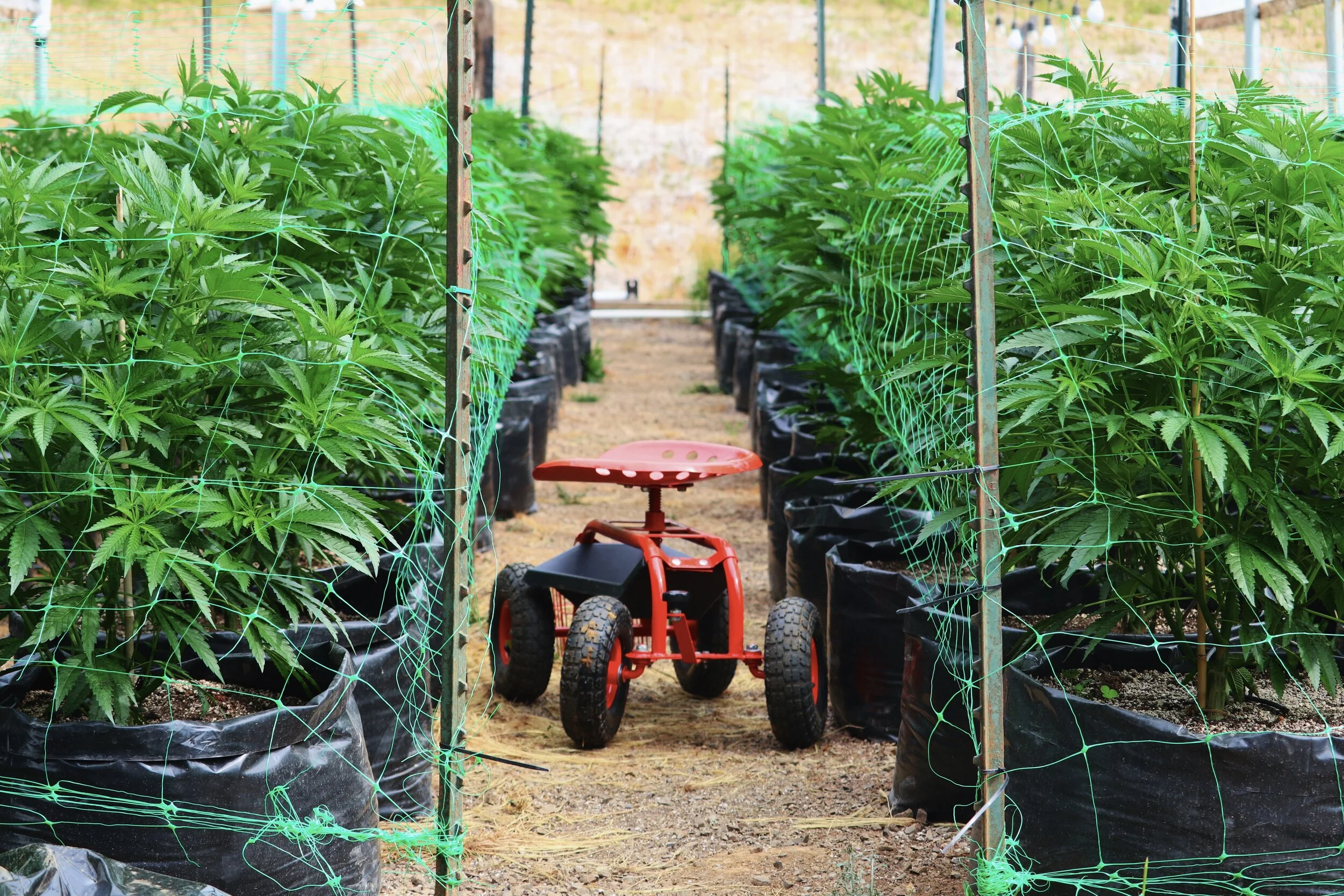Not everything in life goes as planned, but that's what keeps us moving forward on the road of innovation. Without hiccups along the way, we wouldn't fully understand where we can improve our implementations and operations, and we wouldn't learn the valuable bits of information that help us succeed in the future. We recently had one of these hiccups in our garden, but because of other hurdles we've encountered and concurred over the years, we noticed the issue before it became a large-scale problem.
We had just transplanted our young plants into pots, and they were vibrant and green, growing as they should be while working toward maturity. But three weeks in, something odd occurred. We noticed a few of the rows weren't growing at the same rate as the others. Most were taller, maturing quickly, and growing with certainty and purpose. But a couple of rows were shorter, and the leaves' configuration was strange, resembling a ducks foot with how tightly close together the leaflets sat.
Because something unusual was occurring, we evaluated how these plants were being cared for. Were we underfeeding? Overwatering? Were our irrigation lines screwed up? The leaves, being cupped down and firm resembled the overwatering response, but after further inspection, that didn't prove to be the issue. We went through our checklists to ensure all of what we were doing wasn't contributing to the oddity, and only after this confirmation, did we dig a little deeper and look down into the soil. Here is where we saw something strange - there was a lack of root development. Because the early signs of these issues weren't so easily expressed above ground, we wouldn't have noticed the stunting displayed on this group of plants without the side-by-side comparison until it was much further into the cultivation cycle. If it had been allowed to go that far, we would have seen a decrease in our yield and our overall quality.
So, what on earth was going on? The Hop Latent Viroid. The Hop Latent Viroid (HpLVd) originates from hop plants but is asymptomatic when present. Cannabis, being genetically related to hops, was able to contract this viroid, and unfortunately, the cannabis plant expresses symptoms that significantly impact its growth quality and rate. Signs of this viroid in the cannabis plant can be seen as stunted growth, brittle stems, less flower mass, lower trichome development, slow to no root growth, and yellowing of leaves. The symptoms can be all over the place, and sometimes won't boldly display until they are well into their cultivation cycle or are introduced to environmental stressors.
Upon first notice, the Hop Latent Viroid isn't easily identifiable. It's super insidious in this way, especially considering the first place your look probably won't be the roots since the plants will still uptake nitrogen. For us, it was the side-by-side comparison that allowed us to recognize the issue only a few weeks after their planting. Some cannabis farmers would have assumed the odd growth was due to having a “dud,” then proceeded to try to nurse these outliers back to health because they - understandably - are emotionally invested in their plants. But in this case, those farmers would be hitting a dead end. Cannabis plants with HpLVd will run into yield and quality problems down the road, and will risk transmitting the viroid to other plants. While pulling all of these plants may be a hard call to make, when we're dealing with scale and financial impact, it's more cost-effective to remove and replace them than nurse them through to harvest. We are also doing the plants a service by removing the infected from our gardens because we put a stop to the continuous transmission. With that in mind, we replaced the contaminated with new plants and took the couple-week delay to ensure we didn't face a terrible fate. These plants were teens when we caught on to their health issue, but had we not noticed or continued their cultivation, the viroid would have displayed itself proudly in the plants as they moved into the flowering stage, and our output would have been negatively affected.
HpLVd can be transmitted by cutting clones with the same scalpel and through cross-breeding viroid-containing cultivars for seed production. In fact, it's now estimated that 8 percent of all cannabis seeds have HpLVd. It's because of this that many nurseries and seed banks could be unknowingly passing the viroid on to their customers. But it's not all their fault. There's a lack of research on this topic and a lot of unknowns regarding transmission.
So how can we prevent the spread? Tissue culture and in-house cloning. We had Orange Hill OG, one of our cultivars, sent to a tissue culture lab to ensure future cuttings of it won't contain HpLVd. The tissue culture lab will search for the viroid, then eliminate it if found. Another method is to take all of your clones in-house. While there is still the chance that one of your mother plants already has the viroid and has been strong enough to hold off symptoms, you take a step in the right direction by moving your propagation to within your organization and sterilizing your equipment between each created clone tray.
Do you have any other information about the Hop Latent Viroid? Drop your wisdom in the comments! Only by sharing ideas and information can we advance our collective knowledge and cultivate new solutions.
Are you a buyer looking for sustainable craft cannabis? Giving Tree Farms has you covered. Fill out a Wholesale Account form and we'll contact you shortly!

